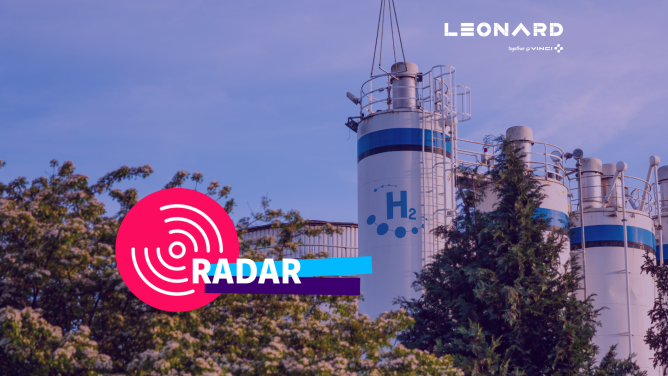“Some piously record ‘In the beginning, there was God’ but I say ‘In the beginning, there was hydrogen”.With that single quip, American physicist Harlow Shapley summed up the primordial place of hydrogen in the functioning of our world. Found in 92% of atoms, it is quite simply the most abundant element in the universe. And yet this essential resource remains unexplored territory for humanity. Today, it is mainly used to produce ammonia, or in the refining of petroleum products and fuels. 74 million tons that somehow do not weigh heavily on future promises. Hydrogen is abundant and produces 3 times more energy than petrol of equal weight. More importantly, its combustion results only in water! There are great hopes, but also just as many stumbling blocks. Hydrogen is difficult to store and transport. 5% of the hydrogen produced is truly decarbonized, as production continues to be 95% dependent on the use of polluting fossil resources. Endeavoring to bridge the gap between the promises and the limitations, we have devised three scenarios for miracle gas by 2030.
Scenario 1 – The hydrogen miracle
The urgency of today’s ecological situation and the massive investments made in hydrogen have knocked down the last of the hurdles: H2has become a symbol of green and renewable energy. Driven by the development of decarbonized electricity production (nuclear, wind, solar, hydraulic), electrolysis takes on an increasing share of hydrogen production, though still not playing in the same league as traditional natural gas reformation or gasification techniques. Following in the footsteps of major national programs, hydrogen facilitates zero-emission mobility. The 10.7 billion euros invested by China in its “hydrogen society” have enabled China to aim to have one million vehicles on the road by 2030. Albeit on a lower scale, the €100 million put into the French Hydrogen Plan have encouraged innovation in the sector in France. Fuel cells are making their way into every sector and industry, for instance, construction which is deploying more and more hydrogen generators. The challenges of gas storage and transportation are stimulating innovators. HySiLabs, the start-up that won the EDF Pulse Awards in 2018, is dedicated to facilitating the transport of hydrogen by liquid vector. Geological storage in a saline cavity, represented by Geostock, a subsidiary of VINCI, should enable the sector to make the necessary step change…
Scenario 2 – Hydrogen, the unmanageable
Elon Musk, who has been claiming since 2014 that fuel cells are “stupid”, can rejoice. The major car manufacturers have come out in favor of conventional batteries – the efficiency of which has also grown much faster – at the expense of fuel cells. The $280 billion estimated to be necessary for hydrogen to reach the required scale in mobility (according to the Hydrogen Council 2017 figure) are far from being reached. The staggering costs of installing hydrogen pumps have discouraged local governments. The vehicles’ prices (a Toyota Mirai costs €80,000 in 2019) have cooled consumer interest. In public opinion, hydrogen-related technologies remain confidential or dangerous. The explosion of a pump in Norway in 2019 slowed deliveries of equipped vehicles for a time. Hydrogen could well become one more line on the long list of technological successes that proved commercial flops.
Scenario 3 – Hydrogen, the missing link in the energy mix
As renewable energy grows, ‘hydrogen’ takes root in major energy uses. With electric vehicles reigning supreme, applications become more specialized. In the field of mobility, the prophecy spoken by Benoît Potier, CEO of Air Liquide, proves true: professional means of transport operate on hydrogen, and thus enjoy great autonomy. The issues around charging stations have slowed down uptake by private users.
With “intermittent” renewable energies, such as solar or wind power, developing quickly, hydrogen also offers the perfect solution for storing surplus via electrolysis. The ferry Nøé, whose propulsion system was designed by Barillec Marine, a subsidiary of VINCI Energies, links Ouessant to the continent by putting this very principle to work. The ferry stores the energy supplied by the turbines as hydrogen, thus preventing losses stemming from the source’s intermittent nature. The liner Green Dream, manufactured by STX in Saint Nazaire, is powered by an electricity production system supplied by Entrepose, a subsidiary of VINCI Construction. Also thanks to Entrepose, Eurovia captures the CO2 of its installations and produces synthetic petrol by combining its CO2 with green hydrogen produced by a photovoltaic farm. French startup Powidian uses hydrogen storage to guarantee the energy security of remote areas, off-grid. Far from the announced face-off, synergies between batteries and fuel cells are proving fruitful!

